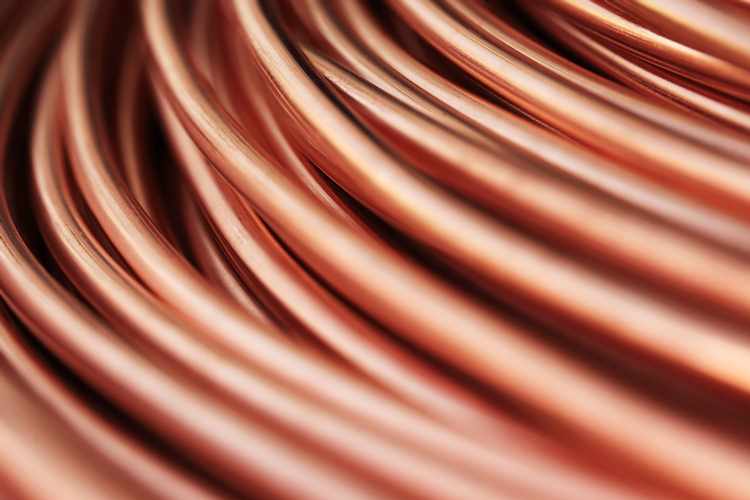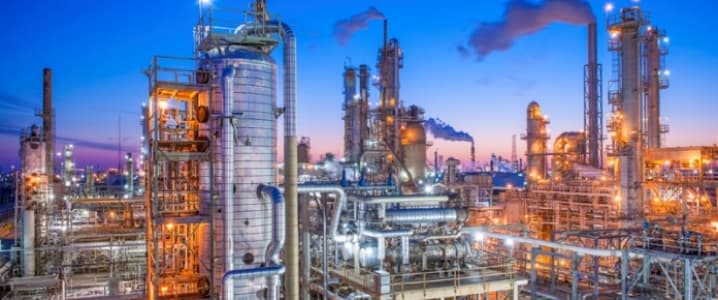The real obstacle to climate action

By Kemal Dervis And Sebastian Strauss/Washington, DC
Climate change is probably the biggest threat facing humanity today. According to the United Nations Intergovernmental Panel on Climate Change, the world must cut its carbon dioxide emissions to net zero by 2050 in order to prevent global warming of 1.5°C, or likely more, above pre-industrial levels in this century. The challenge calls for drastic immediate action, because the infrastructure investments the world makes today will determine the carbon intensity of its growth path for decades.
Yet despite widespread recognition of the size and urgency of the climate challenge, emissions continue to increase, land is “under growing human pressure,” and the Amazon has never been more threatened.
Much of the early climate debate revolved around whether the world should take drastic immediate action to mitigate global warming, or adopt a more gradual approach. The gradualists argued with some success that drastic immediate measures would impose heavy short-term economic costs.
But three recent developments have altered the course of the debate. First, the various feedback loops triggered by global warming now threaten to cause greater and more imminent damage than previously thought.
Second, the cost of clean energy has declined much faster than previously assumed. According to the International Renewable Energy Agency, renewable-energy sources are already the cheapest power option in much of the world, with solar and wind technologies leading the way. Moreover, the cost of “greening” could fall even faster in the future through learning-by-doing. This is also likely to be the case in urban design, transportation, agriculture, and forest protection, all of which need to undergo a green transition.
Finally, the immediate negative externalities of the world’s current high-carbon growth model, such as air pollution, are now better recognised as adding to the short-term cost of climate change. Reducing them would therefore partially offset the upfront cost of mitigation.
These shifts greatly strengthen the case for pursuing much faster and bolder forms of mitigation. As the 2014 New Climate Economy Report concluded, there need not be a tradeoff between growth and forceful climate action, even in the short term.
So, why is more not being done? For starters, although the green transition may have a small net aggregate cost, it is certain to generate losers (as well as winners). And as is often the case with such transitions (for example with trade liberalisation), the gains will be spread across large parts of the population, while the losses will be more concentrated on specific groups, making them more visible and politically disruptive.
When advocating policies that result in aggregate welfare gains, economists often fail to give enough consideration to their likely distributional impact. Instead, they often implicitly assume that the winners will compensate the losers. But if such compensation does not actually occur, the losers are left worse off and can often block change, as the “yellow vest” protesters (gilets jaunes) have done since 2018, when the French government proposed a new climate-friendly fuel tax.
The de facto coalition that is currently resisting climate action consists of the vested interests that own carbon-intensive assets (such as oil companies) and the mostly lower-income groups that would be short-term losers in a rapid transition. Compensating the latter and isolating the former is politically essential.
Unfortunately, it is not clear whether, say, the young German urbanites who voted for the Greens in the European Parliament elections this year would happily compensate the older auto workers – let alone Polish coal miners – who would suffer in a rapid transition. And complicating matters further, the groups at risk of short-term losses from green policies are often bearing the brunt of digitisation and globalisation, too.
Another hurdle to bold action is that climate protection constitutes an “additive” global public good, because there is only one atmosphere and the emissions of any one country add to global greenhouse-gas concentrations as much as those of any other country. This causes the free-rider problem of “carbon leakage.” Europe may well reduce its emissions in line with (or even beyond) the aims of the 2015 Paris climate agreement, but if India and China’s emissions keep increasing – or if Brazil allows the Amazon to collapse – those efforts will have been futile.
Clearly, the whole world would benefit from a co-operative solution. But without a binding international agreement or a supranational authority that can impose global green policies, few countries have an incentive to engage in sufficient mitigation efforts – leaving everyone worse off.
One possible measure to deter free riding is a carbon border tax, as recently proposed by the incoming president of the European Commission, Ursula von der Leyen. Governments that tax carbon could levy a border tax equal to the implicit subsidy given to their “dirty” exports by governments who do not have such a tax. This would effectively impose a kind of shadow carbon price on free riders, prompting them to produce fewer carbon-intensive goods.
Provided that it is non-discriminatory, such border pricing would enhance global welfare and be compatible with World Trade Organisation rules. But calculating the appropriate tax would be very difficult in practice. It would, for example, necessitate calculating the tax equivalent of regulatory ceilings. The measure may also invite countries like the United States to retaliate with distortive measures, making it somewhat perilous. Moreover, the tax would likely have regressive distributional consequences, hurting poor countries the most. A better strategy, then, is to increase green investment in developing countries substantially, with multilateral development banks catalysing private financing in addition to their own funds.
Distributional issues – not aggregate costs – are the real obstacle to the ambitious policies needed to avert possibly catastrophic climate change. Similar challenges, at both the national and international level, also affect the transitions entailed by the so-called Fourth Industrial Revolution.
Neo-nationalist populists are already feeding on the fears created by disruptive change. Ambitious carbonisation could further fan these flames if it is not accompanied by social policies that effectively ease the process. Progressives everywhere must therefore unite in support not only of a rapid green transition, but of one that is politically feasible and desirable for the vast majority of citizens – even in the short run. – Project Syndicate
l Kemal Dervis, former Minister of Economic Affairs of Turkey and former Administrator for the United Nations Development Program (UNDP), is Senior Fellow at the Brookings Institution. Sebastián Strauss is a senior research analyst and Co-ordinator for Strategic Engagements at the Brookings Institution. Follow him on Twitter: @Seba_Strauss









AVIGNON – This January, 3,554 US economists – including 27 Nobel laureates, four former Chairs of the Federal Reserve, and two former Treasury Secretaries – proposed a previously heretical policy. The United States, they said, should combine a domestic carbon price with a “border carbon adjustment system.” By backing tariffs that would reflect the carbon intensity of key imports, they broke with the free-market orthodoxy that national environmental policies should not impede global trade liberalization.
They were right to do so. Absent carbon tariffs, concerns about industrial “competitiveness” will continue to constrain vital action to counter harmful climate change.
The fundamental obstacle to decarbonization is the apparent paradox that the costs are trivial at the final consumer level, but large for an individual company. As the Energy Transitions Commission’s recent Mission Possible report emphasizes, the technology to achieve total decarbonization of the global economy by around 2050-60, with very small effects on households’ living standards, already exists. If all steel used in car manufacturing were produced in a zero-carbon fashion, the price of a typical car would increase less than 1%. The total cost to decarbonize all the harder-to-abate sectors – heavy industries such as steel, cement and chemicals, and long-distance transport (trucking, aviation, and shipping) – would not exceed 0.5% of global GDP. Viewed from this perspective, there is no excuse for national policymakers failing to adopt policies that can drive progress to a zero-carbon economy.
But, viewed from the perspective of an individual company, the costs of decarbonization can be daunting. Producing zero-carbon steel could add 20% to total production costs, and producing zero-carbon cement might double cement prices. So any individual steel or cement company that committed to zero-carbon emissions, or was forced to do so by regulation or carbon pricing, could be driven out of business if its competitors did not face equivalent constraints.
This conundrum has so far stymied the effective use of explicit carbon prices to drive decarbonization. Almost all economists who accept climate science believe that carbon taxes, or prices set in an emission-trading scheme, must be part of any optimal policy response. But even in places where this theoretically desirable policy has been deployed – for example, within the European Emissions Trading System – carbon prices have played a less important role than either regulation or direct subsidization of renewable energy in driving decarbonization. The reason for this is either that carbon prices have been too low to make a major difference, or that the most energy-intensive heavy industries have been exempted. And those weak policies reflect the fear that higher carbon prices and more complete coverage will make domestic industry uncompetitive with imports from countries without such policies.
The obvious response is to impose carbon taxes in one country, or in a customs union of multiple countries, with an equivalent tariff per ton of carbon on carbon-intensive imports, combined with rebates of the tax for exporters. Ten years ago, when I was Chair of the UK Committee on Climate Change, we debated this possibility. But it was met by a wall of opposition. Such policies, it was said, violated WTO rules, were undesirable in principle, and would unleash tit-for-tat tariff increases justified by whatever environmental priority each country wished to pursue.
Since then, we have successfully used other policy levers to drive large-scale deployment of renewable electricity systems, with costs falling dramatically as a result. But in the industrial sectors, the multiplicity of alternative possible routes to decarbonization, and the fact that different routes will likely be optimal in different circumstances, makes it essential to use the price mechanism to unleash a market-driven search for least-cost solutions. And to do that, we need an answer to the competitiveness problem.
That’s why the ETC’s Mission Possible report argues for the inclusion of border carbon adjustments (carbon tariffs) in policymakers’ tool kit, and why so many leading US economists have reached the same conclusion. They now argue for a carbon price within the US, combined with border adjustments for the carbon content of both imports and exports. Such a scheme “would protect American competitiveness and punish free riding by other nations.”
But while the economists couch their argument in language designed to play well in the US, the policy could equally be applied by other countries to defend their industries against carbon-intensive imports from America, should the US choose to be a free rider in efforts to tackle global climate change.
Indeed, no country committed to addressing climate change should regard this policy proposal as a threat to its economy. If one country applies a tax of, say, $50 per ton of carbon dioxide emitted, with an equivalent border tax on imports and with a rebate for exporters, any other country doing the same will leave its industries in exactly the same relative competitive position as before either country introduced the policy. But companies in both countries would now face an effective carbon price.
Global political agreement on carbon pricing has proven to be elusive. A carbon tariff could unleash a sequence of independent national decisions that drive a beneficial “race to the top” in which roughly equal carbon prices spread around the world.
Sometimes, intellectual taboos should be dropped. Border carbon adjustment is an idea whose time has come. It could play a major role in driving progress toward the zero-carbon economy that is technologically and economically possible by mid-century.